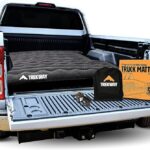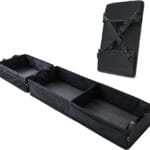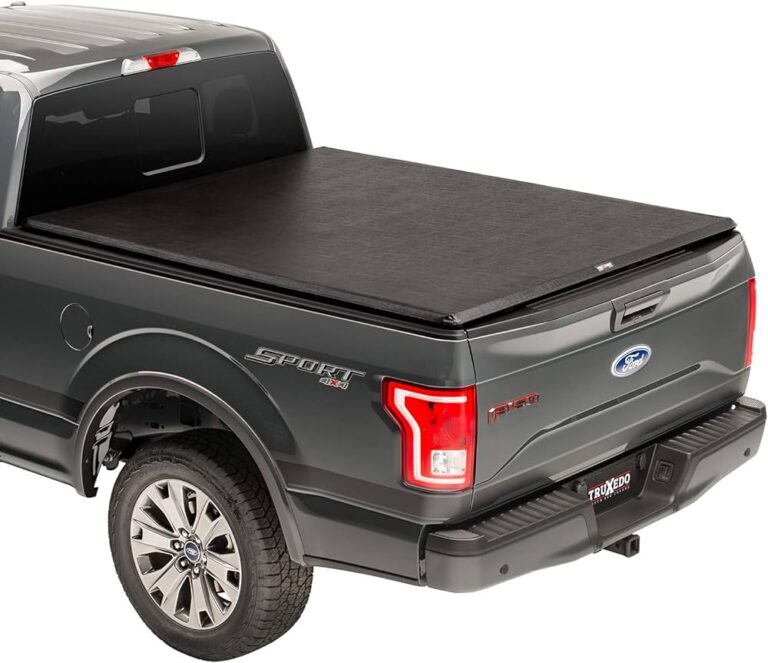How To Put Skis On A Roof Rack: A Step-by-Step Guide
To put skis on a roof rack, gather your gear and ensure the roof rack is positioned correctly. Prepare skis, load them onto the frame, and secure them with straps. Drive safely, checking skis periodically. Unload carefully and store skis properly for the next adventure.
If you’re an avid skier, you know that transporting your precious gear to the slopes can sometimes be a challenge. One of the most convenient solutions for carrying skis is by using a roof rack. However, putting skis on a roof rack requires proper technique to ensure both safety on the road and the integrity of your equipment. In this comprehensive guide, we’ll walk you through the process of how to put skis on a roof rack step by step, so you can confidently and securely load your skis onto your vehicle’s roof rack.
Roof racks are a popular choice among skiers for transporting their gear. They provide ample space and are easy to access, making them a go-to option for many outdoor enthusiasts. But before you start loading up your skis, it’s crucial to consider safety and proper technique to ensure a hassle-free journey to the slopes.
Gather Your Materials
Before you begin the process of loading your skis onto a roof rack, it’s essential to gather all the necessary materials and safety gear. Here’s a list of what you’ll need:
- Roof Rack: Ensure that your vehicle is equipped with a suitable roof rack designed for carrying skis.
- Skis: Obviously, you’ll need your skis, but make sure they’re clean and free of debris, especially if you’ve just come off the slopes.
- Ski Bindings: Ensure that your ski bindings are properly adjusted and ready for transportation.
- Ski Straps or Racks: You’ll need a reliable method to secure your skis to the roof rack. Ski straps and ski racks are common choices.
- Towels or Padding: These will help protect your skis and vehicle during transportation.
- Safety Gear: Don’t forget to wear gloves and safety goggles to protect yourself during the loading process.
- Locks (Optional): To add an extra layer of security, consider using locks to deter potential thieves.
Choose the Right Location

Before you start loading your skis, it’s crucial to choose the right location for your roof rack. Here are some key considerations:
Centering Skis on the Rack: Try to center your skis on the roof rack to distribute the weight evenly. This will help maintain balance and stability while driving.
Avoiding Interference with Other Items: If you plan to carry other equipment, such as a cargo box or bike rack, make sure your skis won’t interfere with these items or obstruct your view while driving.
Adjusting the Roof Rack According to Ski Size: Most roof racks are adjustable to accommodate different sizes of skis. Ensure that your rack is configured to fit your skis properly.
Preparing Your Skis
Once you’ve selected the right location for your skis on the roof rack, it’s time to prepare your skis for loading.
Removing Debris or Snow: Start by thoroughly cleaning your skis. Remove any snow, ice, or debris from the bindings, edges, and base. Clean skis not only look better but also prevent unnecessary mess during transportation.
Securing Ski Bindings: Ensure that your ski bindings are securely fastened. This prevents them from flopping around during transit, potentially causing damage to your skis or vehicle.
Applying Protective Padding: To protect your skis and the roof of your vehicle, it’s a good idea to use towels or padding. Place these between the skis and the roof rack, creating a cushioning layer.
Organizing Skis for Loading: Organize your skis so that they are easy to access and load onto the roof rack. Arrange them with the bindings facing each other for added stability.
Loading Skis onto the Roof Rack
Now that your skis are prepped and ready, it’s time to load them onto the roof rack.
Placing Skis on the Rack: Carefully lift your skis and place them on the roof rack. Ensure that the bindings are facing down, and the skis are aligned with the direction of your vehicle.
Positioning Skis Correctly: Position the skis so that they are parallel to each other and centered on the roof rack. Avoid any overhang that might create instability.
Securing Skis with Straps or Racks: Depending on your preference and the equipment you have, you can choose to secure your skis with ski straps or ski racks.
- Tips for Using Ski Straps: If you opt for ski straps, wrap them tightly around your skis and the roof rack bars. Make sure they are snug, but not so tight that they damage your skis.
- Tips for Using Ski Racks: Ski racks are designed to hold your skis securely in place. Follow the manufacturer’s instructions for attaching and securing your skis on the racks.

Securing the Skis
After you’ve loaded your skis onto the roof rack, it’s time to ensure they are adequately secured.
Checking the Stability of Skis: Gently wiggle your skis to confirm that they are securely fastened. They should not move or shift on the roof rack.
Using Additional Security Measures (Locks, Optional): For added peace of mind, consider using locks to secure your skis to the roof rack. This can be particularly important if you plan to leave your skis unattended in a parking lot.
Final Safety Checks
Before hitting the road, take a few moments for some final safety checks.
Verifying the Roof Rack’s Security: Ensure that the roof rack itself is securely fastened to your vehicle. Loose or improperly attached roof racks can lead to accidents.
Ensuring Skis Won’t Interfere with Vehicle Operation: Double-check that your loaded skis do not interfere with any part of your vehicle, including the roof, doors, or windows. They should not obstruct your view while driving.
Double-Checking the Overall Setup: Take a step back and inspect the entire setup. Confirm that everything is in order, from the cleanliness of your skis to the tightness of the straps or racks.
Driving Safely with Skis on the Roof Rack
With your skis securely loaded onto the roof rack, it’s time to hit the road. However, driving with skis on the roof rack requires some adjustments to ensure safety.
Reducing Speed and Adjusting Driving Behavior: Be mindful of your speed and driving behavior. Skis on the roof rack can create additional wind resistance, affecting your vehicle’s stability and fuel efficiency. Drive at a moderate speed, and avoid sudden maneuvers.
Monitoring Skis During the Journey: Periodically check your skis while driving. Ensure that they remain securely fastened and haven’t shifted or come loose. This will help prevent any potential accidents or damage to your skis.
Adhering to Legal Requirements (e.g., Clearance): Different regions may have specific legal requirements for vehicles with roof-mounted equipment. Be aware of height clearances and any regulations regarding the transportation of sports equipment on the roof.
Unloading Skis
After a fantastic day on the slopes, you’ll want to safely unload your skis from the roof rack.
Finding a Safe and Convenient Location: Park your vehicle in a safe and level location, away from traffic or busy areas. This will ensure a hassle-free unloading process.
Removing Skis from the Roof Rack: Reverse the process of loading your skis. Carefully remove the ski straps or racks, and lift the skis off the roof rack.
Storing Skis Properly: Once your skis are off the roof rack, store them properly to maintain their condition. Clean them, allow them to dry, and store them in a cool, dry place.
Maintenance and Care
To ensure the longevity of your roof rack and skis, regular maintenance and care are essential.
Regular Inspection of Roof Racks: Periodically inspect your roof rack for any signs of wear, rust, or damage. Address any issues promptly to prevent accidents on the road.
Cleaning and Storing Equipment: After each ski trip, clean your skis and roof rack to remove any dirt, salt, or grime. Store your equipment in a dry, secure location when not in use.
Keeping an Eye on Ski Bindings: Ski bindings play a critical role in your safety on the slopes. Regularly check them for wear and tear, and have them professionally serviced as needed.
Conclusion
Loading skis onto a roof rack may seem like a simple task, but doing it correctly is crucial for your safety and the protection of your equipment. By following the steps outlined in this guide, you can ensure that your skis are securely fastened to your roof rack and ready for the next snowy adventure. Remember, safety should always be your top priority, both on and off the slopes. Enjoy your skiing adventures responsibly and with the confidence that your gear is in good hands.
FAQ:
Can you attach skis to a roof rack?
Yes, you can securely attach skis to a roof rack using straps or racks designed for this purpose.
Which way do skis go on a roof rack?
Skis should be placed with their bindings facing down and aligned parallel to each other on the roof rack.
How do you transport skis on the roof of a car?
To transport skis on the roof of a car, load them onto a roof rack, secure them with straps or racks, and drive safely, following recommended guidelines.
Can you put ski poles on a roof rack?
Yes, you can also transport ski poles on a roof rack by securing them alongside your skis using straps or dedicated racks.

















